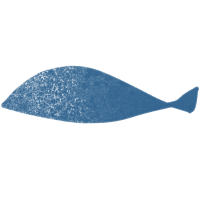Eating fish is one of the great pleasures of life. This book stems from that notion: it contains dozens of recipes from all principal regions of the planet. If you like seafood, aquatic foods and fishery products, there’ll be something in here for you. At the Food and Agriculture Organization of the United Nations (FAO), with a presence in two-thirds of all countries, we know what ends up on the world’s plates. The urge to share some of that culinary wealth was reason enough to bring this volume to life. But it wasn’t the only one.

Most of the dishes we present are “national” or folk recipes, plucked from the gastro-lore that is the sum of household experience. The majority have been collected locally by our staff; often, it’s fare they grew up with, or versions of it. Yet you’ll also find a selection of dishes magicked up for us by celebrated chefs, in whose hands the national tradition is reimagined.
For each species of fish featured, we have sought to provide more context than cookery books normally offer – cultural, historic or environmental, and touching on matters of economics and trade. Food in our times is, after all, a form of world-wise awareness as much as a question of mere sustenance. And while most cookbooks start with the fish sitting on your kitchen worktop, ours starts at the fish stall – and even underwater – with tips on gauging the merchandise and avoiding the common phenomenon that is fish fraud.
The point is this: we at FAO think eating fish is not just pleasurable, but the expression of a global civic consciousness. This book comes out in the International Year of Artisanal Fisheries and Aquaculture – our cue to celebrate the contributions of fisherfolk, fish farmers and fish workers; to support their training for efficiency gains; to connect them to markets – which would include you, our readers; and to help them not just survive, but thrive. Here and there throughout this book, we’ll be telling you what FAO is doing on those fronts.
But there’s an even broader point. Under the Sustainable Development Goals (SDGs), the world has committed to ending hunger and malnutrition in all its forms by 2030. Throw in resurgent conflict and instability, the effects of the COVID-19 pandemic and weak political will, and that deadline is very much in doubt. In 2021, up to 828 million people were undernourished. Three billion individuals couldn’t afford the most modest healthy meal.
Against this background, fish provides a fifth of the daily animal protein intake for almost half the world’s population – and an even higher proportion if we consider just high-quality animal protein, or the micronutrients needed for diversified diets. In other words, fish may not suffice to ensure global food security, but there’ll be no global food security without fish. Every piece of fish on an adult’s plate is a blow to global hunger. Every school meal that contains fish is a win against child malnutrition. To eat fish is not just to bolster livelihoods: it is to partake of one of the world’s most vital resources.



But if you’ll forgive us an oxymoron, resources must be mercilessly nurtured. Another SDG for 2030 urges us to conserve life below water and sustainably use marine resources. As things stand, a third of these are being harvested at biologically unsustainable levels. Large sections of our oceans and seas are poorly governed. Criminal practices endure.
Encouragingly, though, conservation has crept up the agenda. This year’s UN Ocean Conference in Lisbon has been a chance to grapple with the dramatic loss of marine biodiversity caused by climate change. A treaty to end harmful fisheries subsidies, under the auspices of the World Trade Organization (WTO), is gathering momentum. Almost 100 nations have signed up to FAO’s Agreement on Port State Measures (PSMA): the parties agree to deny access to, and use of, their ports to vessels that engage in illegal, unreported and unregulated fishing. By joining the PSMA, least developed countries are unblocking European Union market access for their fish products.


Markets, in fact, are driving elements of progress. Over half the global demand for fish is now met from aquaculture. For all its faults, fish farming helps relieve pressure on the oceans; it is, overall, more efficient than land-based animal production systems; and it generates fewer emissions. It’s also an area of constant innovation, from non-medicalized technologies against fish disease to the use of cultured insects in replacement of fishmeal. The world needs to farm more fish, not less – ideally a third more by 2030, with the emphasis on food-deficit regions, primarily Africa – but do so sustainably.
Logically enough, this book makes no bones about featuring farmed fish alongside fish from capture, and frequently recommends its use. In the case of salmon, for example, where public criticism of breeding conditions has at times been intense, we discuss things frankly, sort fact from hearsay, and set out to allay consumer concerns.


… our competence at FAO may be rooted in the science and economics of food, but we’re also awake to food’s convivial and emotional dimensions. Weighty mandate aside, we enjoy a laugh or anecdote more than we do any sort of lecturing. Which is why this book, while serious, is anything but self-important. We hope you’ll find pleasure in our “fish interviews”: a light take on interspecies communication, they put a playful spin on the project, and so do our recipe illustrations. If Fish: Know it, cook it, eat it piques your curiosity, tickles your conscience, entertains you, and above all leaves you well fed, then our job is done.
